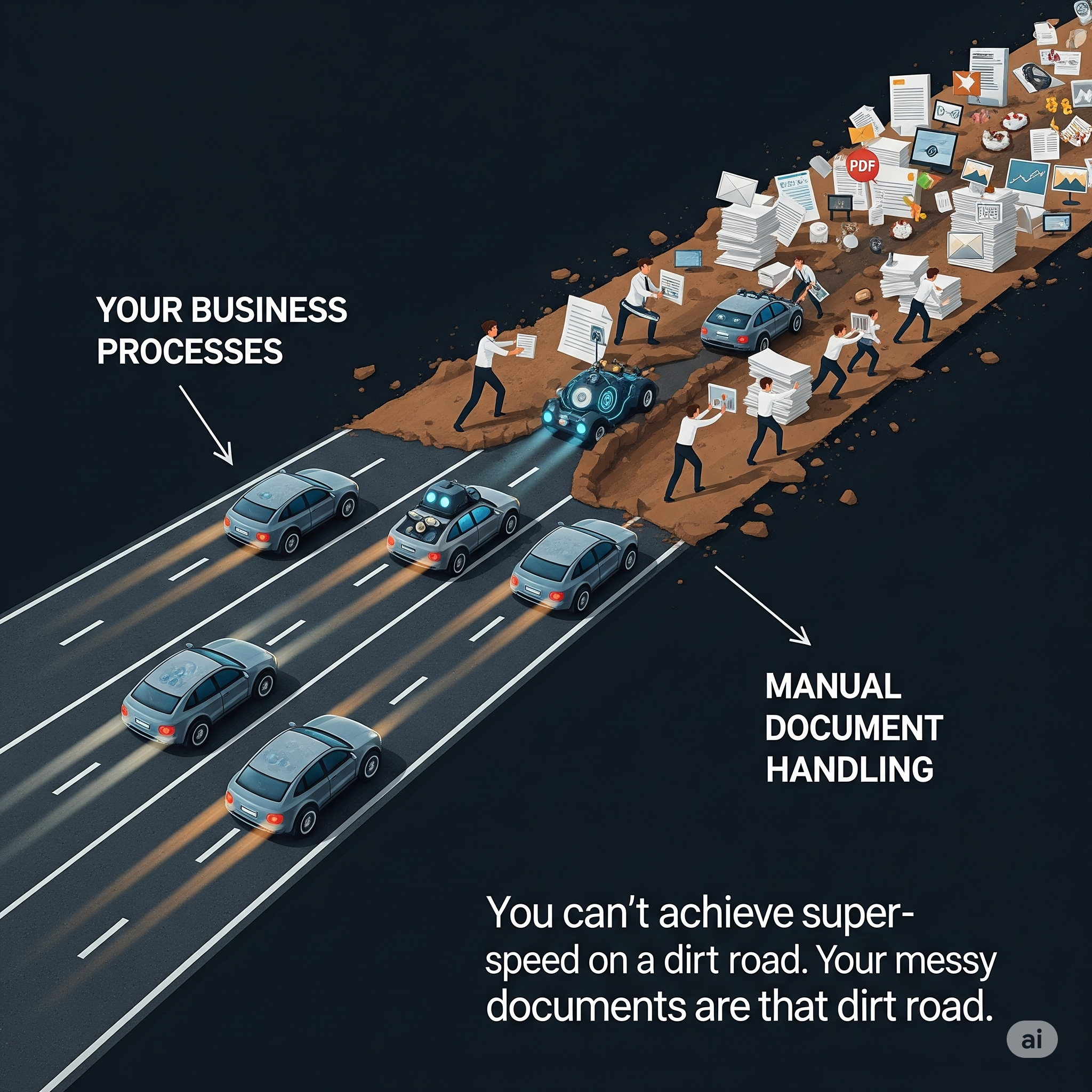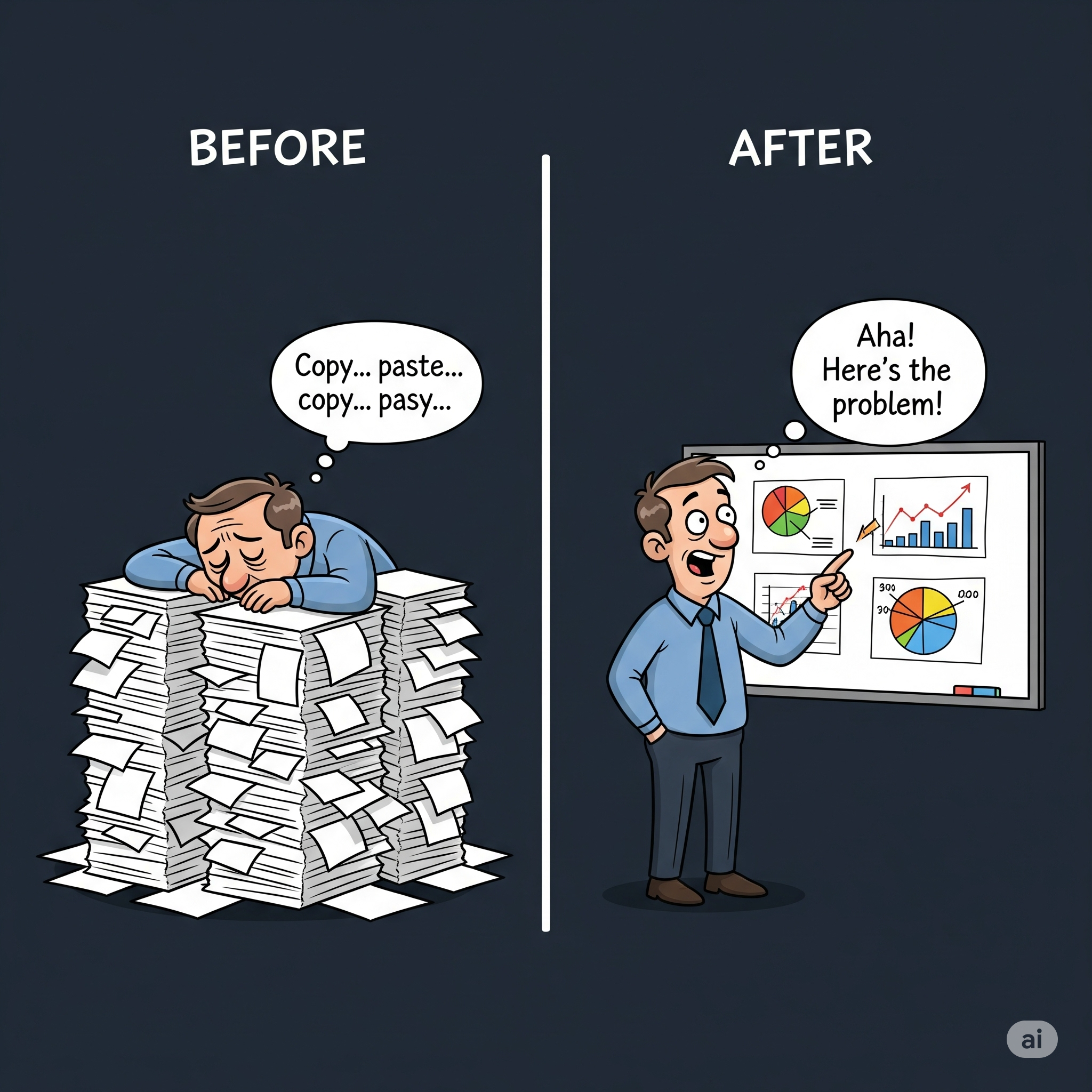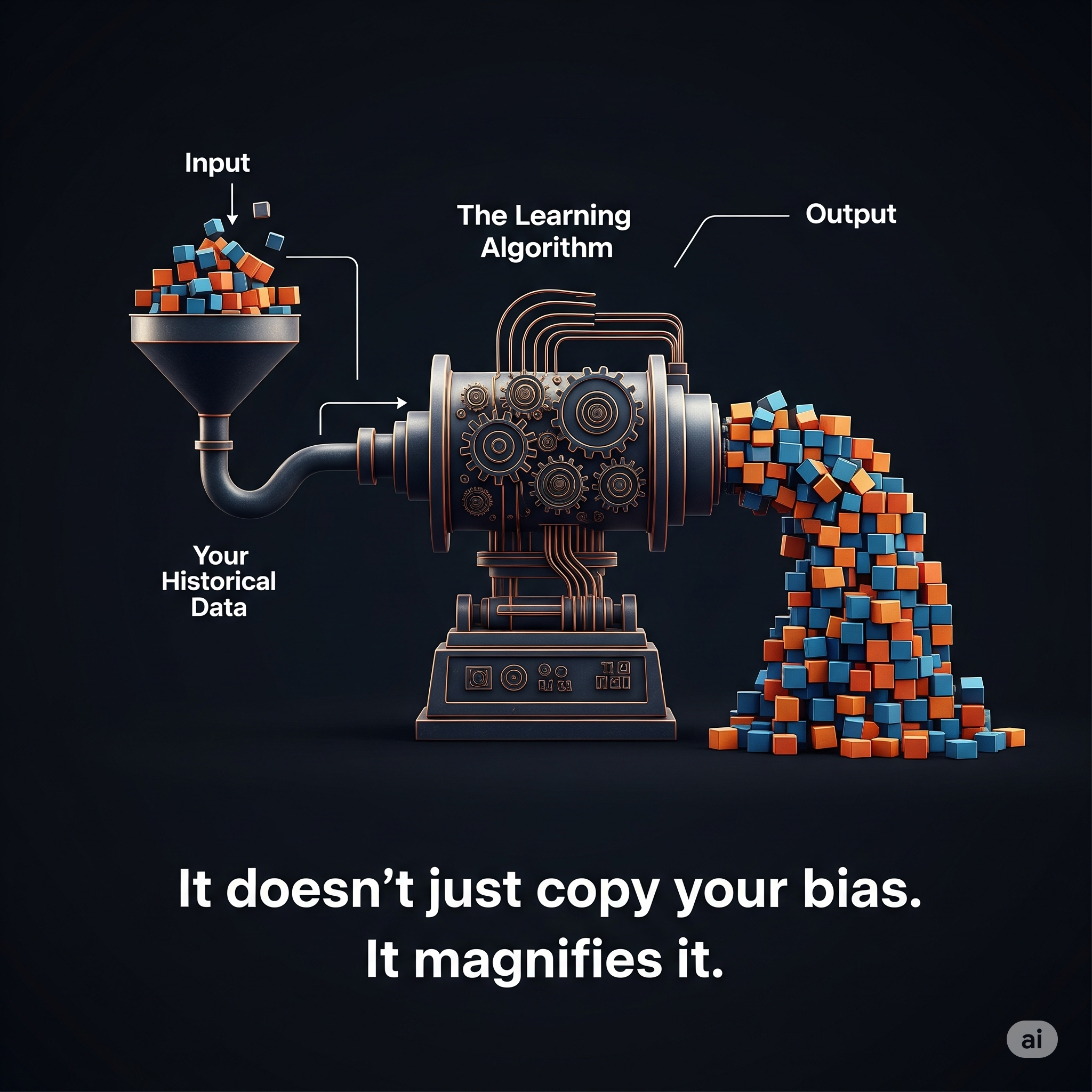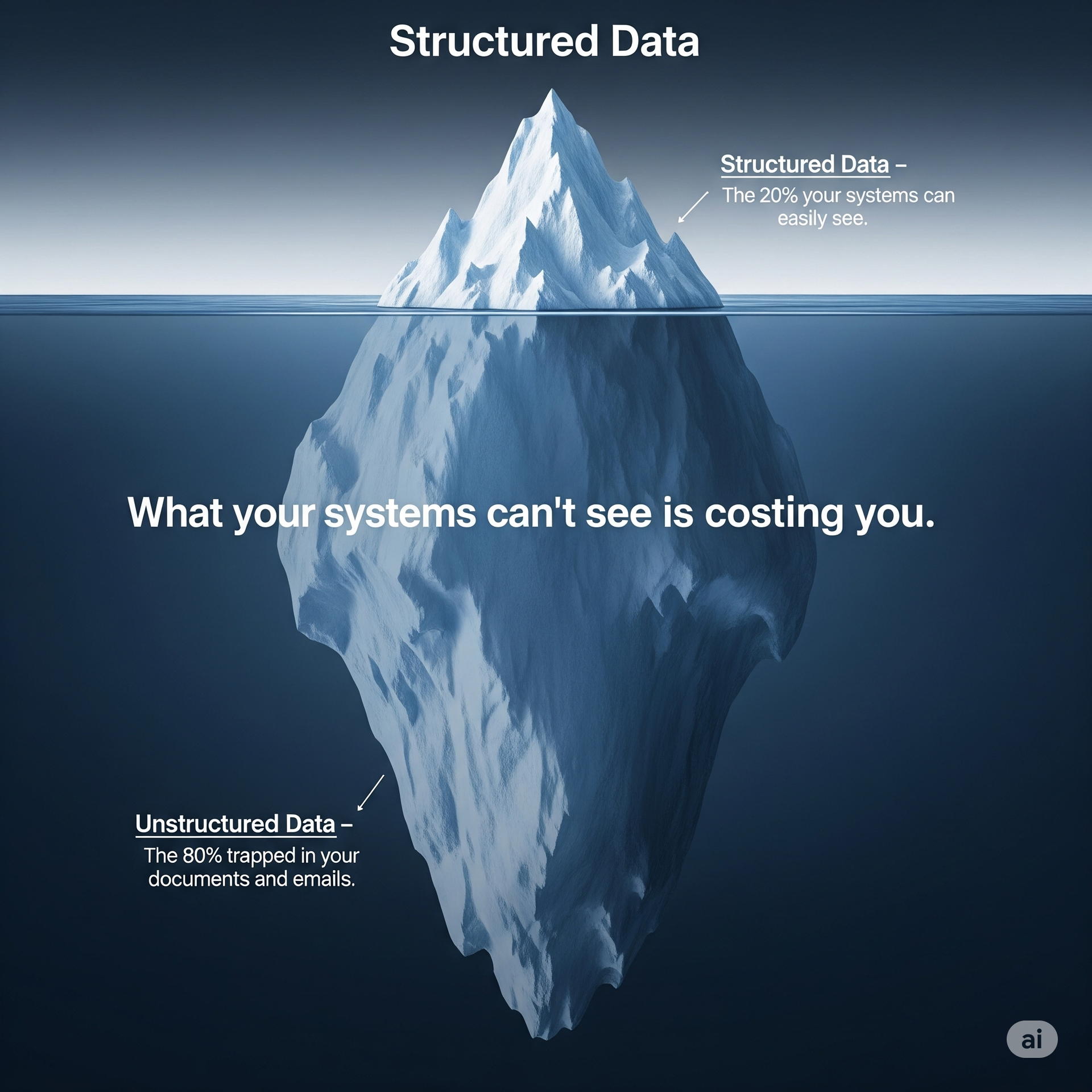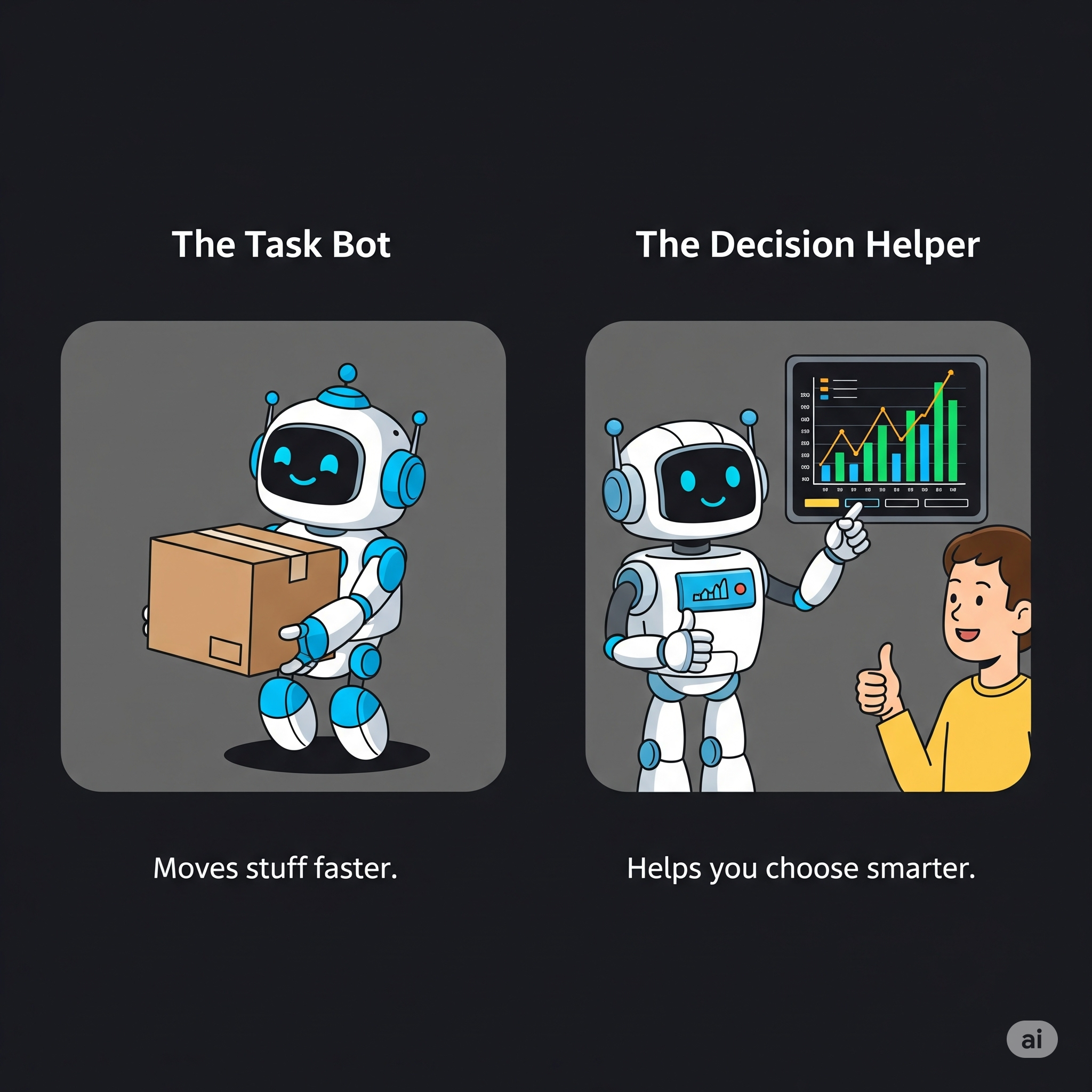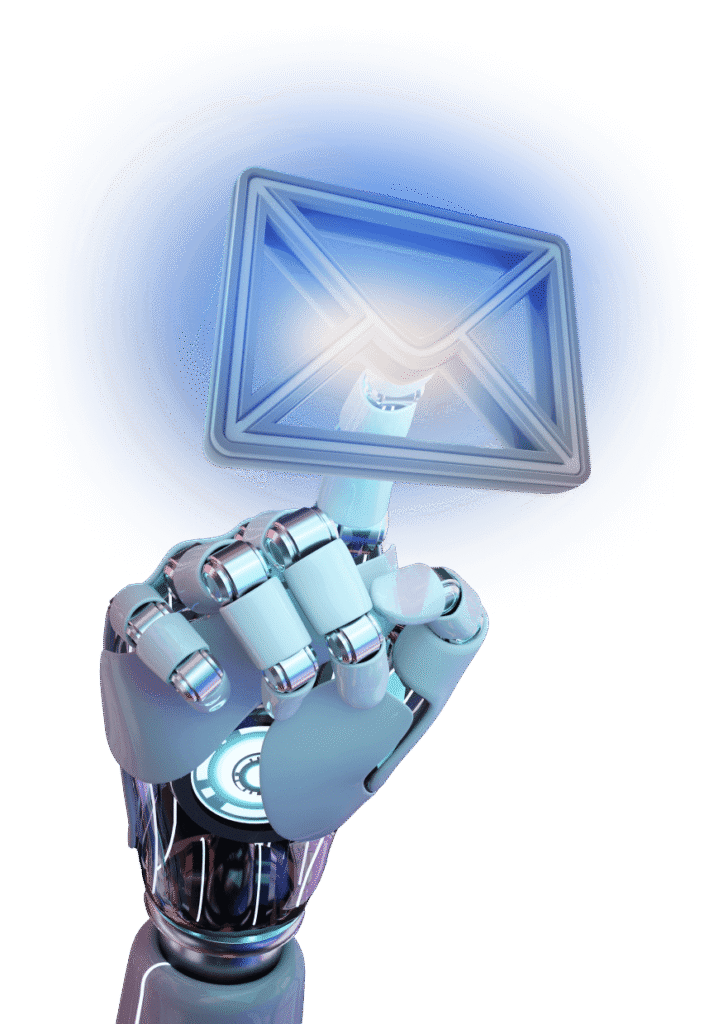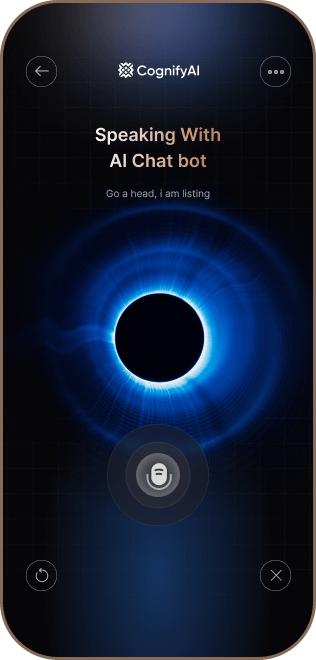For years, we’ve all been chasing the same thing in business: “efficiency.”
We bought automation software to do things faster. We streamlined processes to do them cheaper. The goal was always to cut costs, and for a while, it felt like we were winning. We got leaner, but I’m not sure we ever got smarter.
We got really good at doing the same old things, just at a higher speed. There’s a great saying for this: we were paving the cow path. We made the old, winding dirt road a smooth, six-lane highway, but we never stopped to ask if that road was even going in the right direction.
That “efficiency-first” thinking has a ceiling, and most of us have hit it. The real breakthroughs, the things that give you an actual edge over your competition, don’t come from doing tasks a few seconds faster. They come from making better decisions.
The Big Idea: From “Doing” to “Deciding”
Let’s get real about what most old-school automation does. It’s really good at being a digital gopher. It can grab data from a spreadsheet and dutifully copy it into another system. It completes a task. But it has zero idea what that data actually means.
Now, imagine a different kind of automation. One that doesn’t just move information around, but actually helps you figure out what to do with it.
Here’s a simple example. Think about a bank approving a business loan.
- The Old Way (Task Automation): A software bot grabs the numbers from the applicant’s financial documents and dumps them into the bank’s system. It saves the loan officer some typing, which is nice. But the officer still has to manually review everything, use their gut, and spend a week making the actual, high-stakes decision.
- The New Way (Decision Automation): The same documents come in. But this time, the system doesn’t just copy the numbers. It analyzes them. It compares the company’s performance to others in its industry. It checks its own history to see how similar businesses have fared. It then gives the loan officer a summary and a recommendation: “We think you should approve this loan at a 6.5% interest rate. Their cash flow is great, but their industry is a bit shaky, so here are a few extra protections we suggest. We’re 92% confident in this call.”
See the difference? The first way makes a task more efficient. The second way makes the entire decision better, faster, and safer.

Your Customers Care About This (A Lot)
This isn’t just about internal number-crunching. Your customers feel the impact of your decision-making speed every single day.
Nobody has ever enjoyed waiting 30 days for a mortgage approval. Nobody likes being told an insurance claim will take weeks to process. In today’s world, speed wins.
When you use smart tech to make decisions in minutes instead of weeks, you’re not just improving a process; you’re creating a customer experience that your competitors can’t match. Getting a “yes” on a loan in under an hour isn’t just a nice perk—it’s a reason for a customer to choose you and tell their friends about it.

How to Explain the Payoff
The old way of justifying automation was easy math: we saved X number of hours, which equals Y number of dollars. That’s fine, but it misses the biggest prizes on the table.
When you start automating decisions, you need to ask better questions to see the real payoff.
- Instead of just “How much did we save?” ask, “How much more business did we win because we were faster?”
- Ask, “How much money did we save by making fewer bad decisions and reducing our risk?”
- And don’t forget, “Are our customers happier and sticking around longer?” and “Are our employees less bored and more engaged in their work?”
The answers to those questions are where the real money is. It’s the difference between saving a few bucks and actually growing the business.
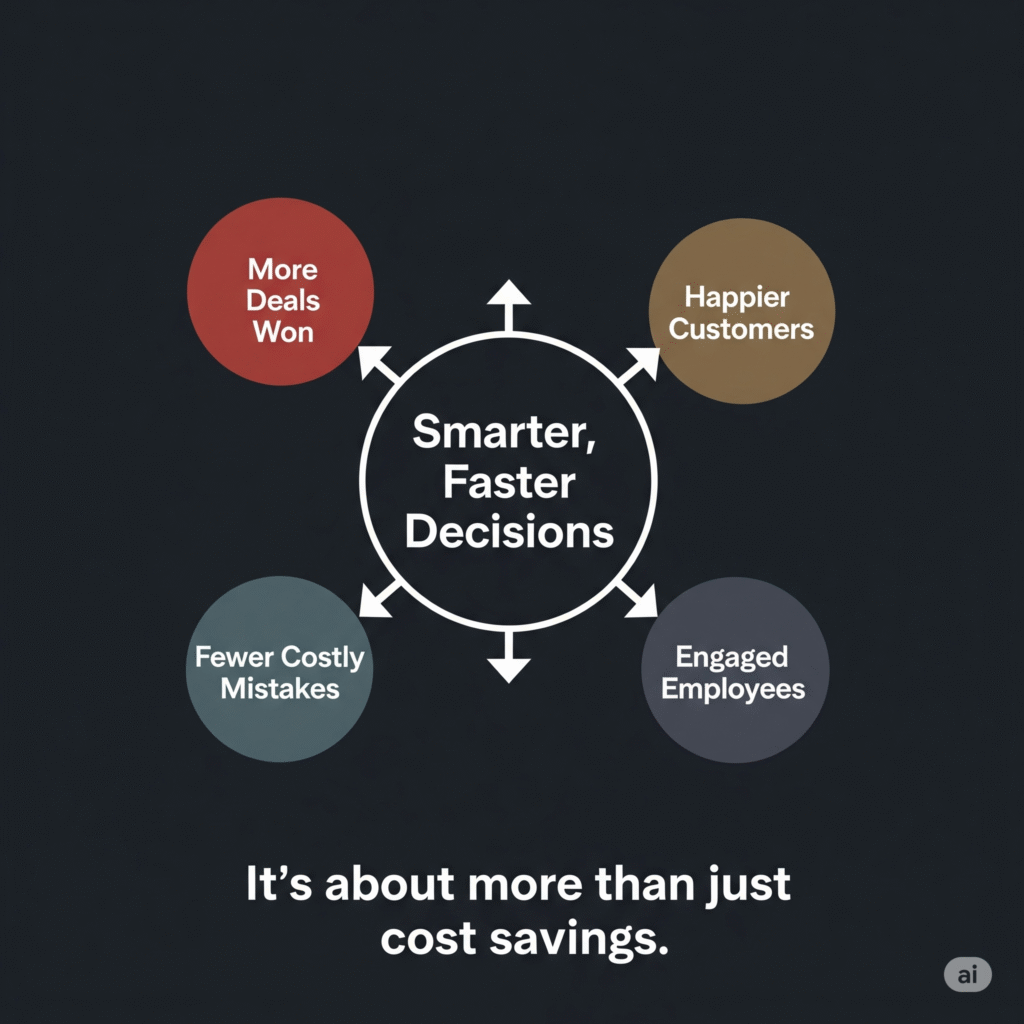
The Bottom Line
For a long time, we thought being a “smart” company meant being an efficient one. But the game has changed. Today, the smartest companies aren’t just the ones who do things fast; they’re the ones who consistently make better decisions.
Using technology to help your people make smarter, faster, and more consistent choices is the single biggest advantage you can build for your business. It’s time to stop just paving the cow path and start looking for a better destination.


